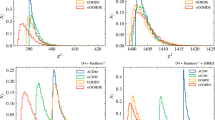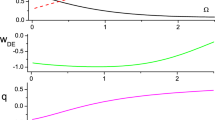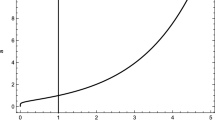Abstract
The singlet scalar model is a minimal extension of the Standard Model that can explain the dark matter. We point out that in this model the dark matter constraint can be satisfied not only in the already considered WIMP regime but also, for much smaller couplings, in the Feebly Interacting Massive Particle (FIMP) regime. In it, dark matter particles are slowly produced in the early Universe but are never abundant enough to reach thermal equilibrium or annihilate among themselves. This alternative framework is as simple and predictive as the WIMP scenario but it gives rise to a completely different dark matter phenomenology. After reviewing the calculation of the dark matter relic density in the FIMP regime, we study in detail the evolution of the dark matter abundance in the early Universe and the predicted relic density as a function of the parameters of the model. A new dark matter compatible region of the singlet model is identified, featuring couplings of order 10−11 to 10−12 for singlet masses in the GeV to TeV range. As a consequence, no signals at direct or indirect detection experiments are expected. The relevance of this new viable region for the correct interpretation of recent experimental bounds is emphasized.
Similar content being viewed by others
References
K. Griest and M. Kamionkowski, Supersymmetric dark matter, Phys. Rept. 333 (2000) 167 [SPIRES].
D. Hooper and S. Profumo, Dark matter and collider phenomenology of universal extra dimensions, Phys. Rept. 453 (2007) 29 [hep-ph/0701197] [SPIRES].
J. McDonald, Gauge singlet scalars as cold dark matter, Phys. Rev. D 50 (1994) 3637 [hep-ph/0702143] [SPIRES].
C.P. Burgess, M. Pospelov and T. ter Veldhuis, The minimal model of nonbaryonic dark matter: a singlet scalar, Nucl. Phys. B 619 (2001) 709 [hep-ph/0011335] [SPIRES].
R. Barbieri, L.J. Hall and V.S. Rychkov, Improved naturalness with a heavy Higgs: An alternative road to LHC physics, Phys. Rev. D 74 (2006) 015007 [hep-ph/0603188] [SPIRES].
L. Lopez Honorez, E. Nezri, J.F. Oliver and M.H.G. Tytgat, The inert doublet model: an archetype for dark matter, JCAP 02 (2007) 028 [hep-ph/0612275] [SPIRES].
L. Lopez Honorez and C.E. Yaguna, The inert doublet model of dark matter revisited, JHEP 09 (2010) 046 [arXiv:1003.3125] [SPIRES].
G. Bertone, The moment of truth for WIMP Dark Matter, Nature 468 (2010) 389 [arXiv:1011.3532] [SPIRES].
K.-Y. Choi and L. Roszkowski, E-WIMPs, AIP Conf.Proc. 805 (2006) 30 [hep-ph/0511003] [SPIRES].
J.L. Feng, A. Rajaraman and F. Takayama, Superweakly-interacting massive particles, Phys. Rev. Lett. 91 (2003) 011302 [hep-ph/0302215] [SPIRES].
L.J. Hall, K. Jedamzik, J. March-Russell and S.M. West, Freeze-in production of FIMP dark matter, JHEP 03 (2010) 080 [arXiv:0911.1120] [SPIRES].
C.E. Yaguna, Gamma rays from the annihilation of singlet scalar dark matter, JCAP 03 (2009) 003 [arXiv:0810.4267] [SPIRES].
A. Goudelis, Y. Mambrini and C. Yaguna, Antimatter signals of singlet scalar dark matter, JCAP 12 (2009) 008 [arXiv:0909.2799] [SPIRES].
G. Bélanger et al., Indirect search for dark matter with MicrOMEGAs2.4, Comput. Phys. Commun. 182 (2011) 842 [arXiv:1004.1092] [SPIRES].
WMAP collaboration, E. Komatsu et al., Seven-year Wilkinson Microwave Anisotropy Probe (WMAP) observations: cosmological interpretation, Astrophys. J. Suppl. 192 (2011) 18 [arXiv:1001.4538] [SPIRES].
XENON100 collaborartion, E. Aprile et al., Dark matter results from 100 live days of X ENON 100 data, submitted to Phys. Rev. Lett. (2011), arXiv:1104.2549 [SPIRES].
M. Farina et al. Implications of XENON 100 results for dark matter models and for the LHC, arXiv:1104.3572 [SPIRES].
Author information
Authors and Affiliations
Corresponding author
Additional information
ArXiv ePrint: 1105.1654
Rights and permissions
About this article
Cite this article
Yaguna, C.E. The singlet scalar as FIMP dark matter. J. High Energ. Phys. 2011, 60 (2011). https://doi.org/10.1007/JHEP08(2011)060
Received:
Accepted:
Published:
DOI: https://doi.org/10.1007/JHEP08(2011)060




